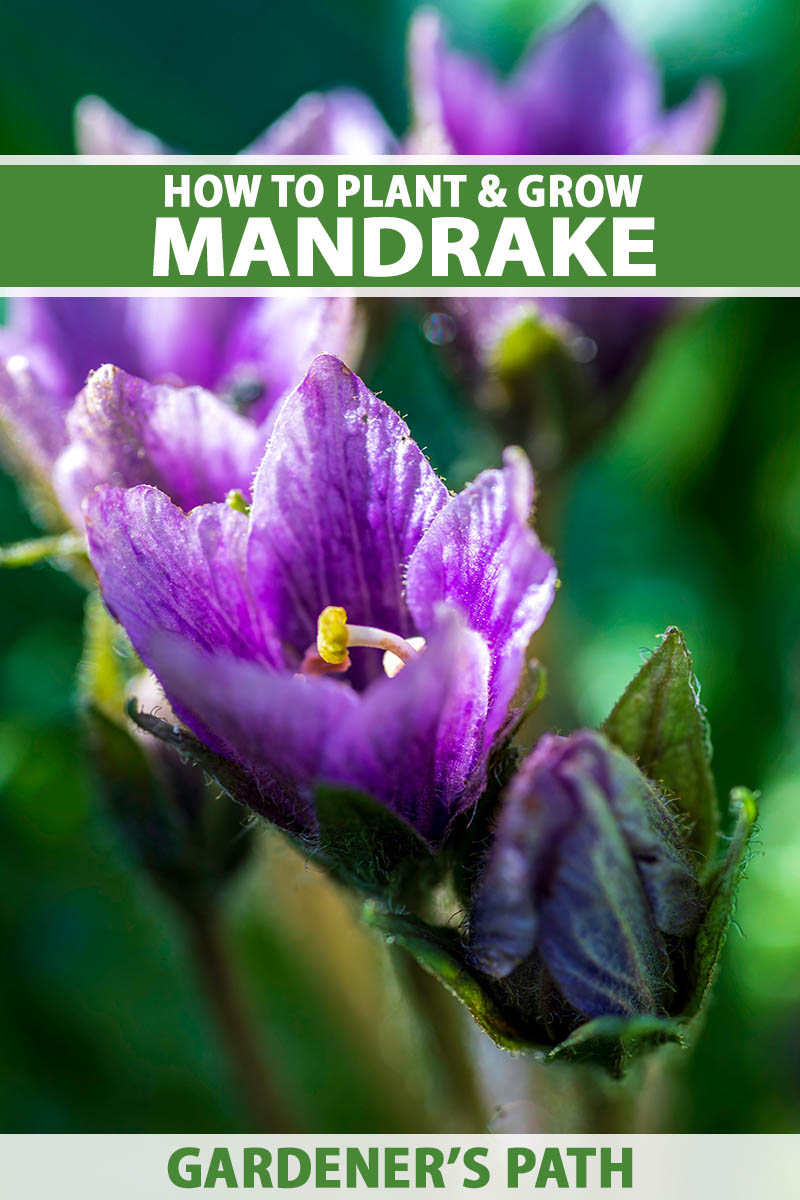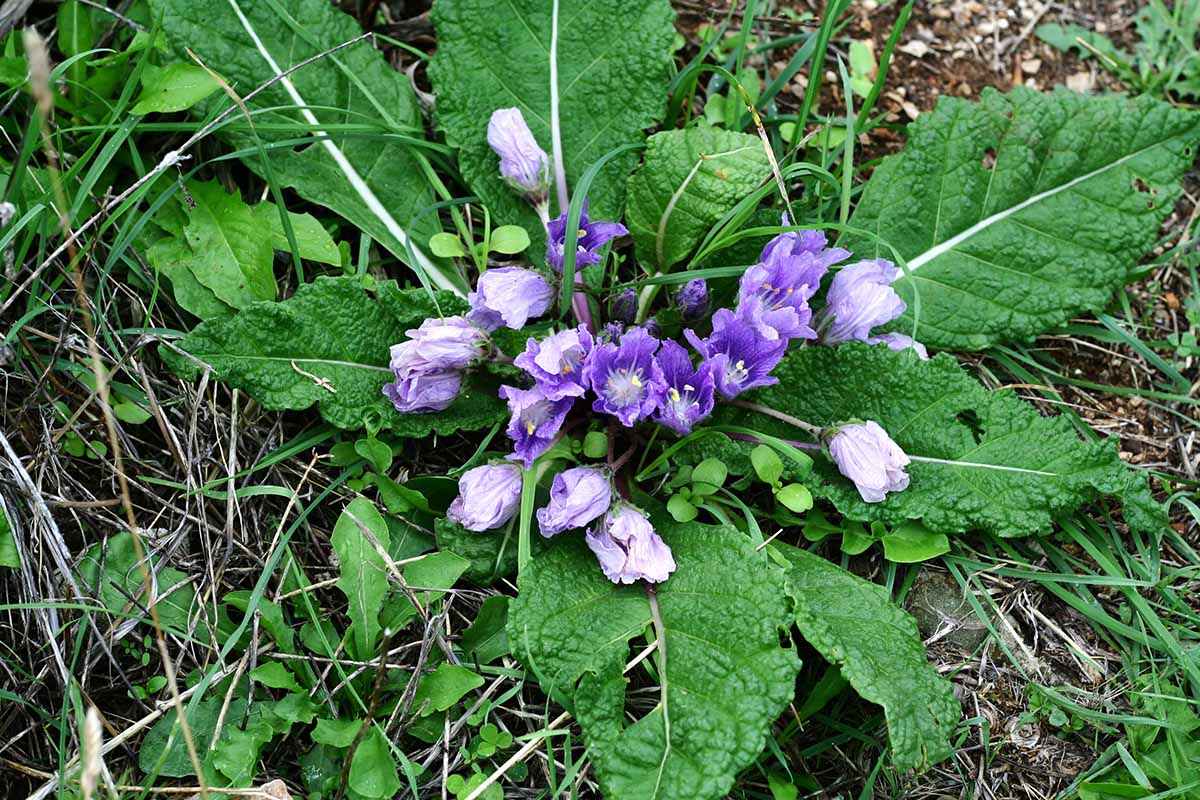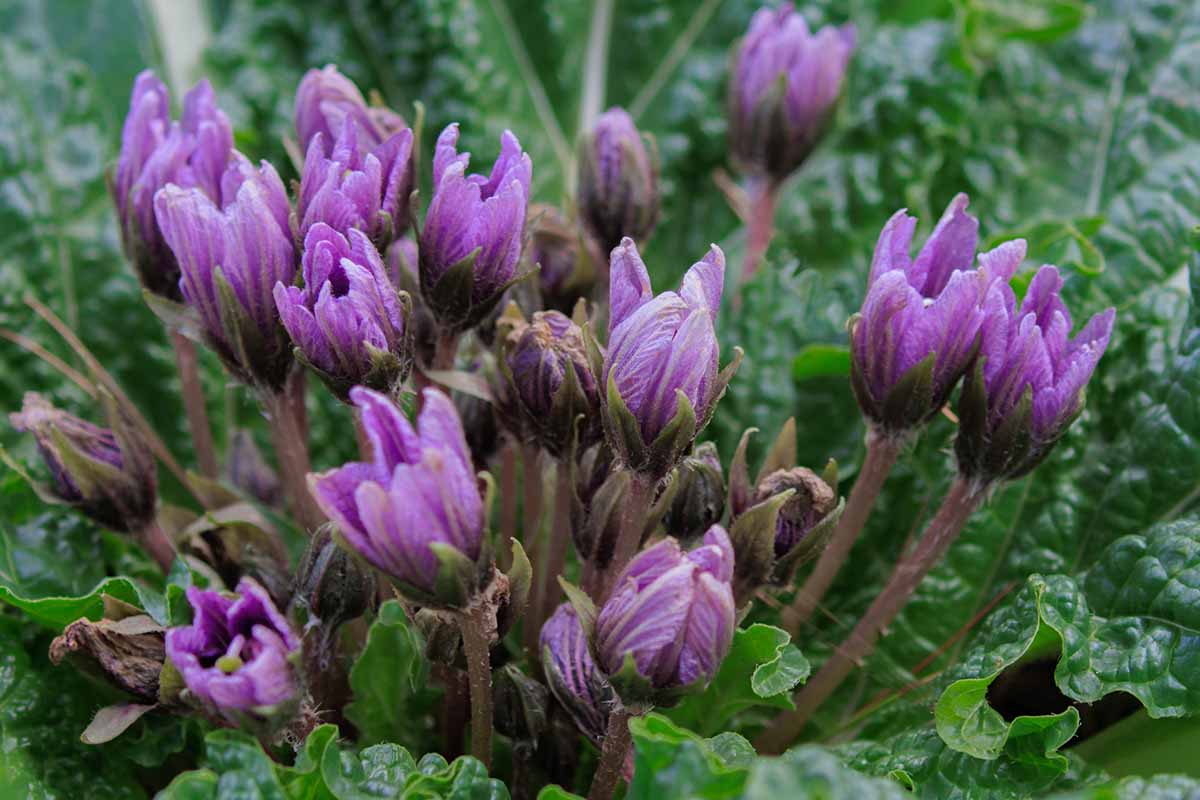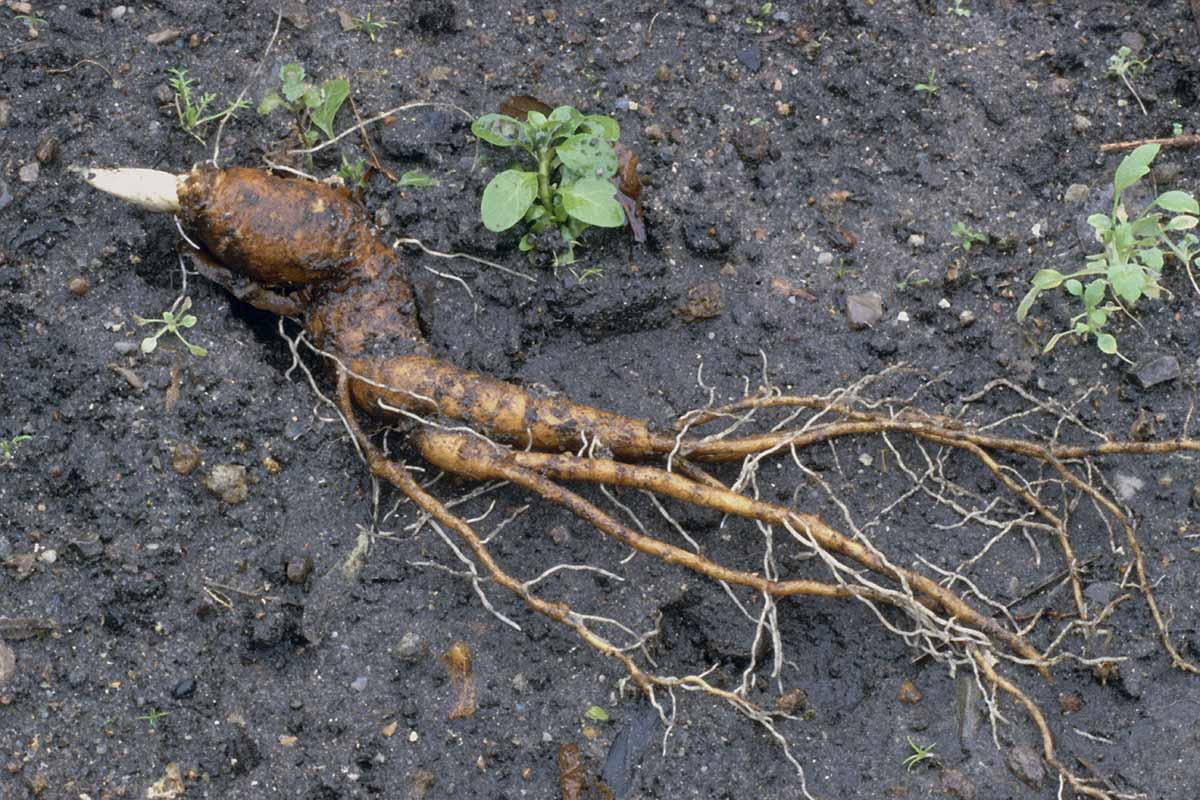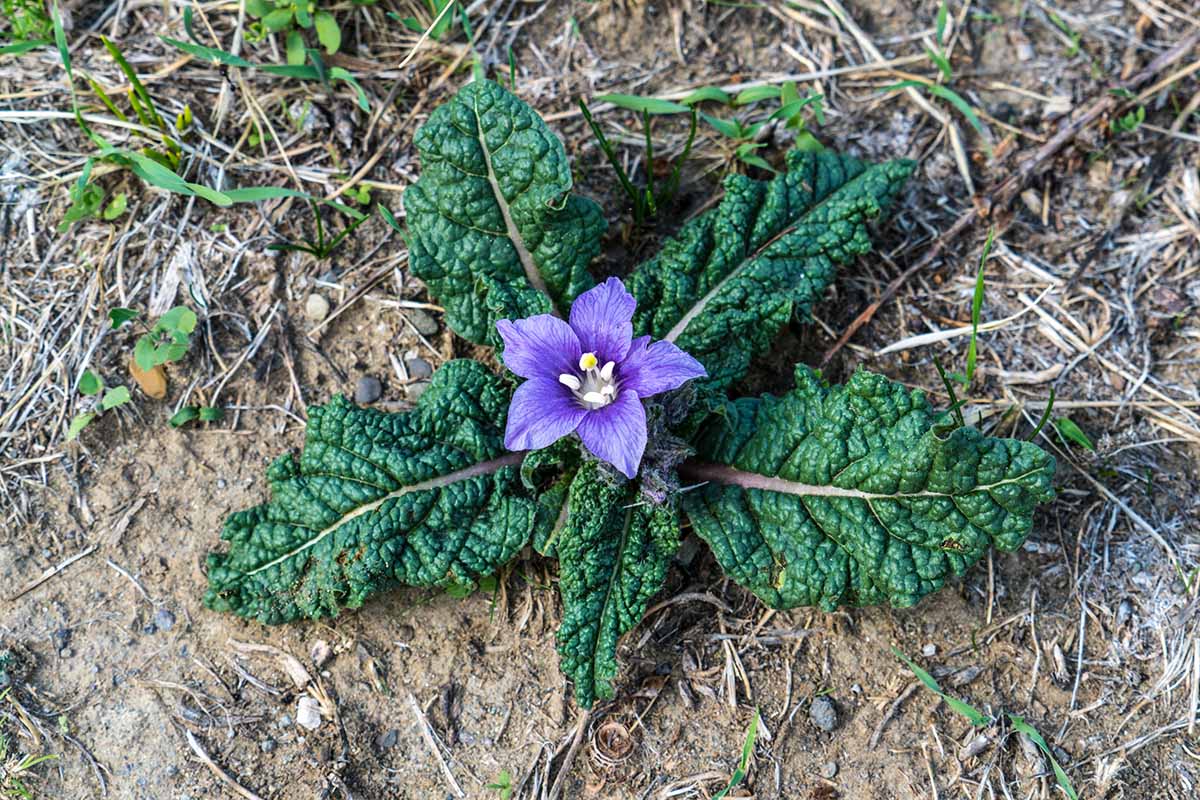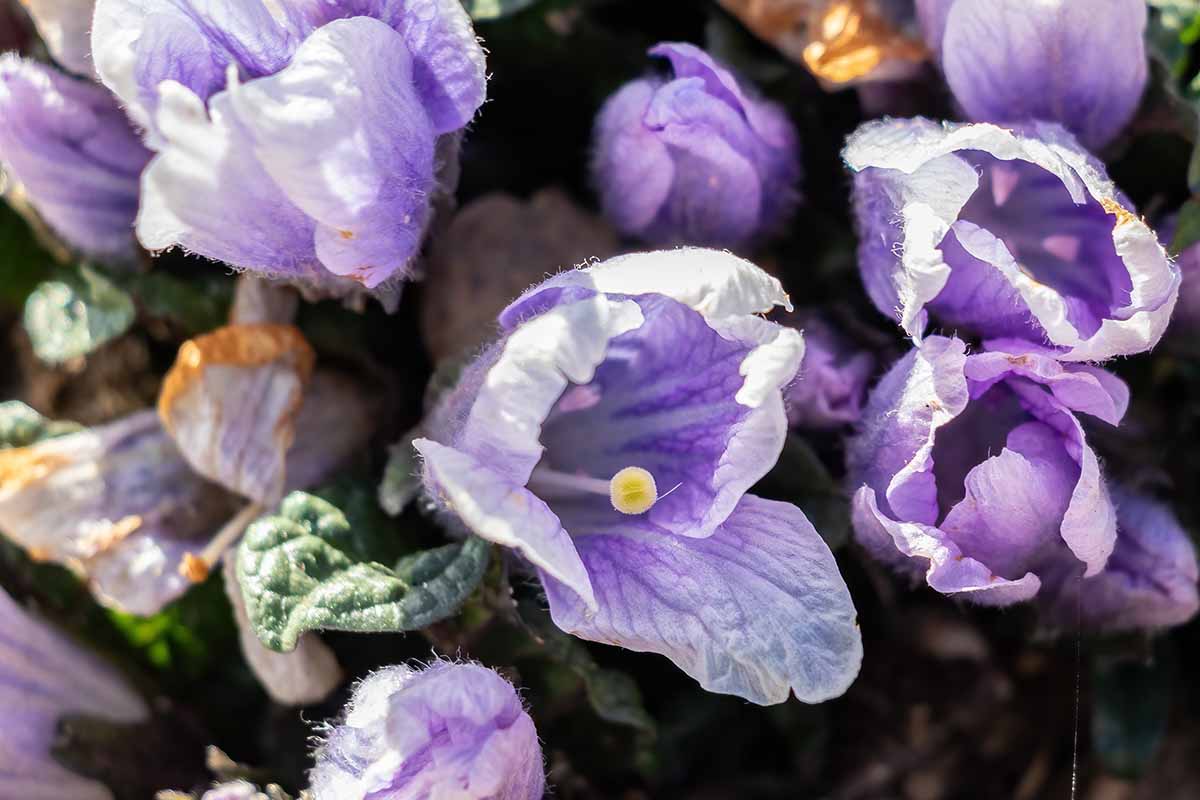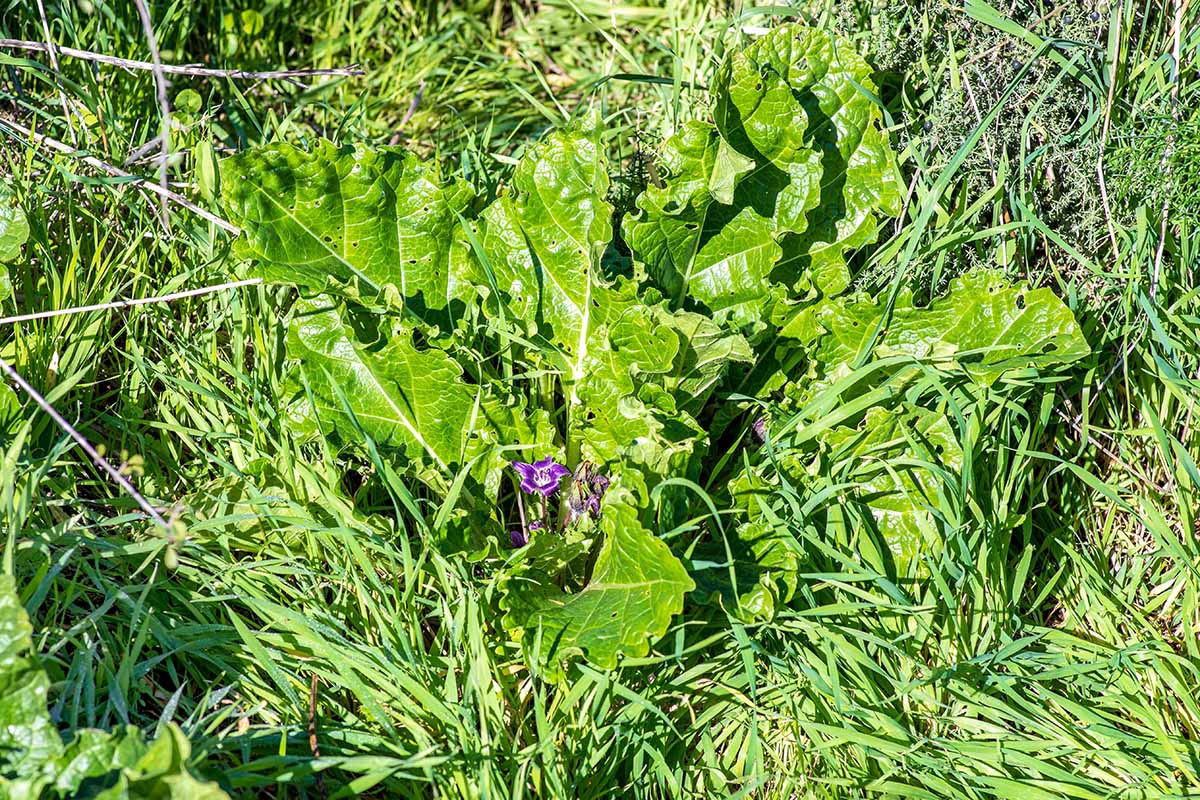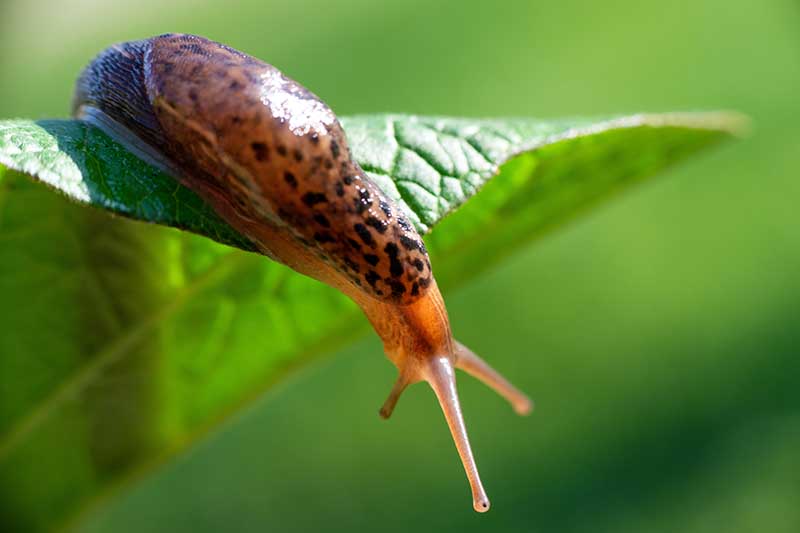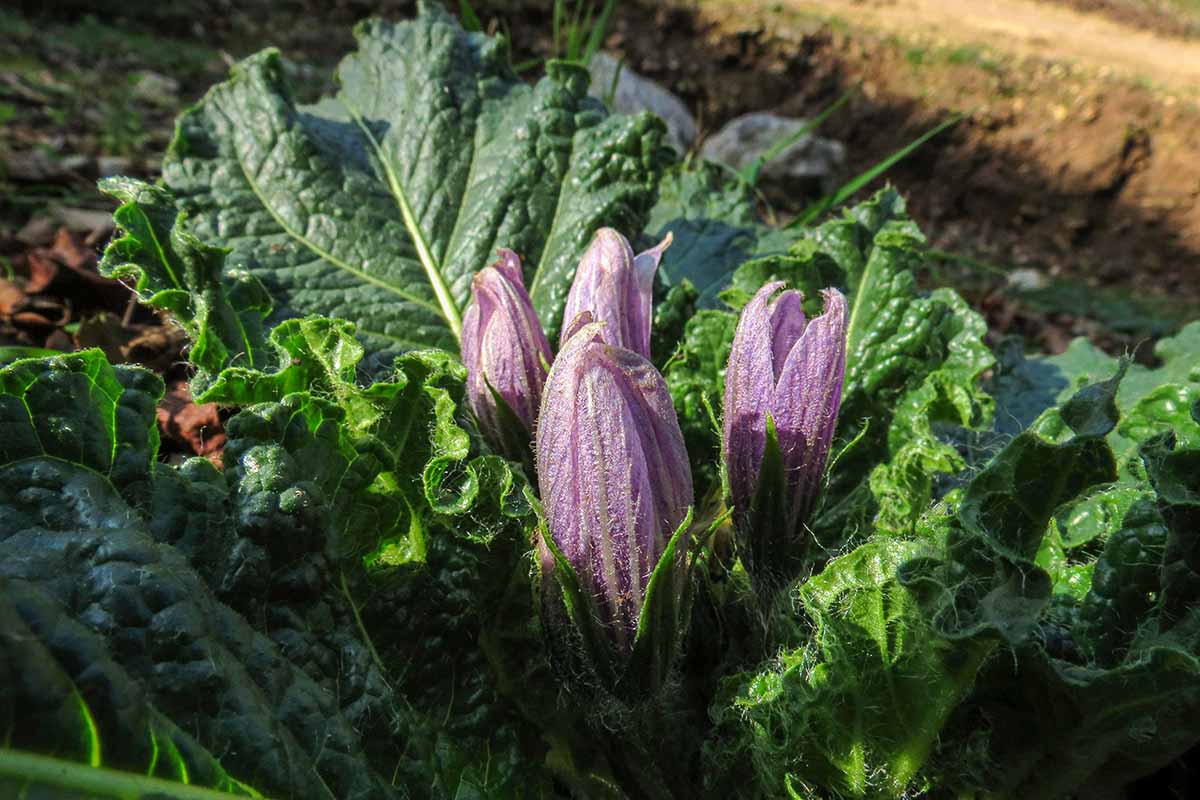This enchanting herbaceous perennial requires cultivation by a devoted gardener. Patience is mandatory when sowing mandrake seeds and providing the ideal climate for them to grow in. We link to vendors to help you find relevant products. If you buy from one of our links, we may earn a commission. Learning more about these mysterious plants will encourage and inspire you to grow them in your garden! Knowledge is not only empowering, but in the case of growing poisonous plants like this particular nightshade, it’s necessary for safety. This guide will highlight the accepted species of mandrake and we’ll cover propagation and growing tips for home cultivation. Here’s what’s ahead:
Cultivation and History
Species of the Mandragora genus contain hyoscyamine and scopolamine, which are toxic tropane alkaloids. If ingested, these powerful alkaloids cause adverse symptoms including blurred vision, dry mouth, vomiting, difficulty swallowing, and anaphylaxis. All parts of these plants are poisonous – do not eat them. Aside from producing these toxins, all species of mandrake share similar traits. The most striking feature is a forked taproot which may be said to resemble the human body in its form, with a head and torso, and branching arms and legs. These can grow up to four feet long. The large, green, oval-shaped or elongated, wrinkled leaves grow low to the ground in a rosette that may spread to two feet in diameter, with a height of about one foot. Clusters of alluring upright flowers on short stems bloom in spring, with five petals each in shades of purple. The fruits they produce in summer start out green and turn a yellow to orangish color as they mature and ripen. The scent of the berries is often strong, and said to be pleasant. After fruiting in summer, plants go dormant and reemerge in winter, putting on new growth. Of course, the question remains: how many species of Mandragora are there? Many botanists have differed in their opinions over the years, and you’ll find a long list of outdated synonyms throughout various guidebooks and reference materials. The two most notable species mentioned in many texts for their medicinal and magical powers are M. officinarum and M. autumnalis. Both are native to southern parts of Europe along the Mediterranean. And some of the taxonomic powers that be will tell you that as of the most recent classification, technically, these seem to actually be the same species. This doesn’t account for any seasonal variation in bloom time, however. Formerly classified as M. vernalis by some, the plant typically referred to as common mandrake blooms in the spring, whereas its close relative M. autumnalis – perhaps so close that it is in fact genetically the same plant – was named as such because it blooms in the fall. Two additional species you may come across are M. turcomanica and M. caulescens. M. turcomanica, or Turkmenian mandrake, is native to the Kopet Dag Mountains in Iran and is considered rare – some taxonomists will tell you this is also M. officinarum, perhaps a local variety or subspecies with slightly different characteristics unique to this geographic location. M. caulescens, commonly known as Himalayan mandrake, is native to the Himalayas, namely in regions of southwest China and Myanmar. M. caulescens was first described by British botanist and explorer Sir Joseph Dalton Hooker in 1883. An accepted species recognized today, several subspecies have been described with purportedly unique characteristics, but taxonomists now consider these specimens to actually be Himalayan mandrake species plants. Mandragora species should not be confused with American mandrake, also known as mayapple (Podophyllum peltatum), or English mandrake (Bryonia alba). The latter species is also sometimes referred to as false mandrake. Mandrake has a long and rich history of use in herbal medicine and various esoteric supernatural practices. And upon pulling a mandrake root from the ground, it was once said that unless you covered your ears, the shrieks unleashed by the powerful rhizome could drive whoever was so bold to pull it up mad, or even kill them. Highly skilled and experienced practitioners meticulously use powerful and potentially deadly plant constituents in natural remedies, but medicinal use of mandrake today is rare. Traditional medicinal applications include promoting sleep and relieving pain. It was also known historically as an aphrodisiac and herbal ally for fertility. An early written record of mandrake comes from the Book of Genesis, the first book of the Hebrew Bible and the Christian Old Testament. In these ancient texts, Rachel uses mandrake root to conceive a child. Mandrake is also mentioned in Greek mythology in many instances, and much of the lore that still surrounds the plant today has been attributed to this.
Propagation
The quickest way to grow a new plant is by propagating root cuttings, though they might be hard to come by. Potted starts aren’t commonly available at nurseries. To dig a little deeper into the magical lore of this nightshade and how it’s been used in the past, I recommend reading “The Witching Herbs: 13 Essential Plants and Herbs for Your Magical Garden” by Harold Roth. It’s an enthralling book! The author has vast experience cultivating baneful plants and does a fantastic job blending plant magic with practical gardening techniques. The Witching Herbs You aren’t likely to stumble upon mandrake in most botanical gardens, but you can be sure that Mandragora is growing in the famous poison garden at Alnwick in the UK, a space with an intriguing design theme that sparks one’s imagination and curiosity. The Bonnefont herb garden at the Metropolitan Museum of Art Cloisters in New York City also features mandrake among their medieval plantings. Thanks to devoted cultivators, you may find seeds available for sale. These plants are simple to propagate from seed with just a little patience and their preferred setup. Be sure to wear gloves to protect your skin when handling these plants.
From Seed
The process of sowing seeds will depend in part on whether you have fresh or dried seeds available. If you’re starting with dried seeds, soak them in water for a day or two prior to cold stratification and sowing. Plan to sow more than you think you’ll need, as germination rates are sometimes low. Fresh seeds should be sown as soon as possible, ideally outdoors. These can be collected from mature specimens when the fruit is ripe and soft, though some gardeners report successful germination after picking them while they’re still green and allowing them to cure. Remove the pulp and you’re ready to sow. Mandrake seeds require a period of cold stratification to germinate, and outdoor conditions in the fall and winter will provide the moisture and temperature fluctuations required to spur germination and growth in spring. Sow seeds about half an inch deep in your selected planting area, with at least a foot of space between plants. These conditions can also be mimicked indoors, by placing seeds in a zip-top bag of moist sand and putting it in the refrigerator to chill for a period of about one to three months, until you’re ready to sow them indoors in containers or outside. For container sowing, a seed-starting flat or gallon-size pot filled with a fast-draining soil medium like a standard cactus mix will work. Space the seeds with a few inches between each, gently tamp the soil down, and water them in. Individual seeds could also be started in four-inch biodegradable pots to facilitate future transplanting. These plants have sensitive taproots and avoiding causing damage to the roots is recommended for healthy growth. Light and warmth will help to encourage faster germination after cold-stratifying the seeds. Keep the soil evenly moist and place the tray or pots in an area that receives full sun or bright direct light with temperatures that stay between 70 and 75°F. For example, you could place them in a sheltered outdoor space if conditions permit, in a greenhouse, or even indoors with a grow light and a seedling heat mat. This is where patience comes in, as it can sometimes take eight to 12 months from cold stratification and sowing to germination and seedling growth, depending on the local conditions and the method you choose. Maintaining consistent light and warmth can help to speed up the process after seeds are planted, particularly if you are starting with freshly harvested seeds – if you’re lucky, you may see sprouts in just three weeks or so in a warm and sunny spot! After seedlings sprout, continue to maintain soil moisture until plants are established.
From Root Divisions
If you can get your hands on root cuttings, then you’ll be able to propagate a new specimen more quickly. I want to reiterate my suggestion to wear gloves to protect your skin from absorbing any of the toxic tropane alkaloids when handling mandrake roots. Mature plants that are three to four years old are best to take root cuttings from, and this may be done in the fall or winter. Note that plants may sometimes fail to thrive after disturbing the roots. Going in a wide circle around the perimeter of the plant, gently dig up a portion of the root (if you dare!) and loosen the soil. Take a cutting with a clean gardening knife, dividing the roots at a clear point of separation, or severing an “arm” or “leg” – the length of these can vary. Replant the parent.Take the cutting and bury it about two inches below the soil surface in a container of sufficient height, filled with sandy soil. Water in well, and allow excess to exit the drainage holes. Place in a brightly lit, protected area. Maintain soil moisture until the plant begins to send out new growth.
From Seedlings/Transplanting
Once you have your baby mandrakes, you have a few options in terms of permanent places to grow them. If they are already growing in a one-gallon pot, they can remain there, to be kept either indoors or outdoors. Closely spaced seedlings may require thinning to give plants enough room to spread, so plan accordingly if you want to avoid wasting any seedlings. Remember to use caution when considering where you will grow your mandrake and keep it away from areas frequented by curious children or pets. If you decide to grow your seedlings in the ground outdoors, there are a few things you will need to consider. First, spring is the optimal time to transplant them, after plants have emerged from dormancy and the risk of frost has passed. And secondly, the soil type and light they receive must be just right. We’ll go into more detail on the best planting location in the next section. Loosen the soil well in the planting area, and be sure to amend to promote good drainage if necessary. Dig a hole that is double the size of the root and set your seedling so the top of the root ball is level with the soil. Water in well.
How to Grow
Mandragora is hardy in Zones 6 to 8, and the plants prefer slightly alkaline to neutral soil that is deep and sandy. They thrive in full sun but can tolerate some shade, and they do not favor high humidity. If you live in a warmer climate, I suggest planting in part shade for protection from extreme heat. Active growth for these plants begins in late winter, and they typically go dormant during the hottest time of year in the summer. Well-draining soil is absolutely necessary, and it must be loose to promote root development. Amending with sand and organic matter can help to improve drainage, and planting in heavy clay is not recommended. Watering your established mandrake specimens only when the soil has completely dried out to a depth of a few inches will help to prevent rot. You can add compost to the soil once a year in early spring to encourage robust growth.
Growing Tips
For safety, do not grow where children or pets are present, or in an edible garden.Mandragora prefers well-drained, deep, sandy soil.Feed plants annually with compost.
Maintenance
If you planted your mandrake in the ground, you might want to thin your stand at some point since these plants spread readily via their underground rhizomes. This creates an opportunity to propagate new specimens from root cuttings and dividing every three to four years or so supports proper airflow. Refer to the division portion of the propagation section above for guidance on what to do with your divisions. When dividing plants, be sure to wear gloves and dig the roots up carefully, so you don’t damage them. Division is best done when the plant is dormant. If you’re growing mandrake in a container, it might eventually outgrow its pot. Gently turn the container over and divide the roots before repotting, and choose containers about double to triple the size of each root cutting. Keeping grass and weeds away from your mandrakes will help them to spread, and the prior year’s foliage that has died back can be removed prior to the emergence of new growth. If you don’t want plants to produce berries and seeds, deadhead the spent blooms.
Where to Buy
Mandrake seeds and starts can be difficult to come by. We suggest checking local sources including nurseries that specialize in rare plants, plant societies, and herbal apothecaries. If you know of a local planting or a gardener in the area who is growing Mandragora, ask whether you might be able to collect some fruits after they ripen, to sow the seeds in your garden. If you live within the native range of these plants, do not dig up wild plants or collect cuttings or seeds in areas where this is not permitted.
Managing Pests and Disease
Few pests dare to bother mandrake. The ones that do are easy to control, familiar garden foes found among plants with abundant growth to munch on. All gardens can benefit from attracting predators like birds and frogs to help manage pests by planting biodiverse species.
Slugs and Snails
It’s not difficult to recognize snail or slug damage. They feast on foliage or flowers, leaving behind large holes and trails of slime, and they can destroy seedlings. There are a few effective organic methods to control them. You can pick them off by hand or you can attract them away from plants by baiting them with beer, raw potatoes, or cabbage leaves. Find more tips in our guide to managing these pests.
Root Rot
A common ailment that many plants may succumb to if they suffer from “wet feet,” it’s important to grow mandrake only in well-draining soil. Oversaturation or standing water can lead to rot, and by the time wilting or yellowing of the leaves is apparent above the soil surface, rot is typically already in its advanced stages. Ensure good drainage in the ground and in containers, plant only in porous soil, and avoid overwatering. You may be able to dig up and cut away black and rotten portions of the root, but it’s probably best to discard rotten specimens and start over.
Best Uses
Growing mandrake is essential in a magical garden and it adds intrigue to Gothic designs with other spooky and mysterious plants. They capture attention whether grown in a container or in the ground. Refrain from adding them to areas where children and pets are present, and away from edible plants and herbs. Placing a plant identification sign near them with a warning is suggested. Some gardeners enjoy growing plants with toxic traits and deadly histories because of the enchantment they bring. Therefore, this species is one to include in an ornamental poison garden, filled with plants only grown for decorative purposes. Mandrake is a hauntingly beautiful plant that is appropriate for gothic-inspired gardens. Their historical lore, medicinal uses, poisonous properties, and stunning appearance contribute to the intrigue surrounding them. Do you already grow mandrake in your garden? Share your experiences in the comments below to help dispel any myths that may deter other gardeners from cultivating this magical herb. If you enjoyed this guide, we think you’ll also find these topics interesting:
Gardening Myths Explored: Planting by Moon PhasePlant Folklore: Myths, Magic, and SuperstitionGarden Folklore Galore: Reviewing Popular Garden Myths
